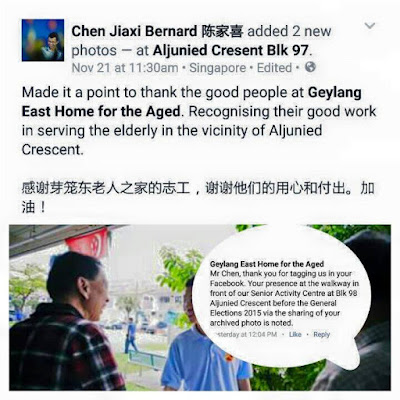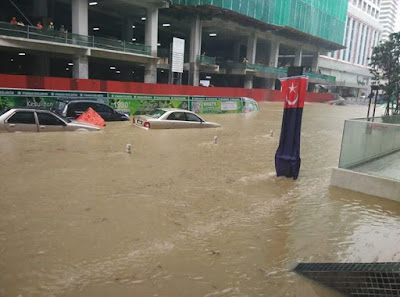By Mark Farha Kon, November 27 at 11:59am
I'm no warfighter. I think many of us serving our two years in the army aren't. But I know of a good number of people who, at moment's notice, are more than willing to get up, put on their Full Battle Order, and defend Singapore.
Because we know what is at stake. Because we know that the peace we enjoy is not free. Because we know how much blood sweat and tears was poured into the building of this miracle nation.
When we leave home everyday and tell our family we love them, we look in their eyes and we know what we fight for, what we defend. We know we have the luxury of coming back home to a house intact, a family intact. Many people in war torn zones don't get this chance we take for granted.
When we walk past a mosque next to a temple next to a church, we know this is something completely inorganic. That it took and still takes effort, understanding, racial harmony, to enjoy such things as non-event.
You type from your office chair in your 8-5 job in your air conditioned room, which you drove to in your air conditioned car, and mock the preparedness of the SAF in the event an incursion occurs.
But you forget, not everybody passed out a lance corporal like you, unfulfilled and bitter that the government "stole" two years of your life. And whilst everybody counted down to their ORD the same way you did, they didn't waste their two years lamenting the fact.
"And they all learned things you complainers and naysayers of the SAF never will : purpose, camaraderie, drive, determination, grit, sacrifice."
They learnt to accustom themselves to communal living, they lost their hair, wore the same number 4 as everyone else, ran in the same PT kit as everyone else, and learnt that in the army, there was no strata. The bungalow kid and the HDB kid all slept on the same beds, ate the same food, got punished all the same. Army was and still is the great equalizer.
The Haircut that marks the sometimes emotional transition from civilian to soldier
Then some went on to go through 9 months of vigorous training, many attritioning throughout the course. Those that made it, we call them officers. Others went on to don three chevrons, spending 6 months in the grueling hell they call Sergeant Cadet School.

Most get sent to the Infantry Regiments, 1 to 12 SIR as riflemen, and as they say, life for them is 2 years of Tekong. Not to forget those that got sent to commandos, guards, naval diver unit. They all became more comfortable in the humid forest, drenched in perspiration, long 4 covered in mud, than you ever will be in your crisp white shirt and business pants.
And they all learned things you complainers and naysayers of the SAF never will : purpose, camaraderie, drive, determination, grit, sacrifice.
You pay 200 a month for a manicured gym to go to with towels provided, protein shake bars, steam and shower rooms. The jungle is their gym. Flipping tyres, running in the full heat of the sun.
You haven't seen the Master Warrant Officers who have badges so plentiful, they run out of space on their uniform to sew it on. The ones with ranger and guard tabs. The ones who went to America, trained as navy seals, and passed out navy seals. Yes, we have navy seals in Singapore, and they are Singaporean.
The ones who everyday, hold themselves to the highest standards in the execution of their jobs, because they know, they're not just doing a job for a pay : they're keeping Singapore safe.
So that naysayers like you who passed out lance corporal with neither testimony nor combat skills badge can mock the very system and organization that allows you the safety and peace of mind to even think of mocking them.
I know these soldiers, I know these men, I've seen these enciks. They might drink beer and talk nonsense while off duty, and you dismiss and discount them, but inside they possess the grit you never will. They are proud to be part of the SAF, and their stories, scars and experiences they will forever carry with them as badges of honor. They've done much and gone through much worth remembering, i can't say the same for you complainers.
A Master Warrant Officer who is a special ops commando once told me this : "why 国家 and not 家国? Because if there is no country, can you even have a home?"
These people who do, and not just talk, have all my respect.
Yours sincerely, a clerk in the SAF.
Source:
Mark Farha Kon Facebook










